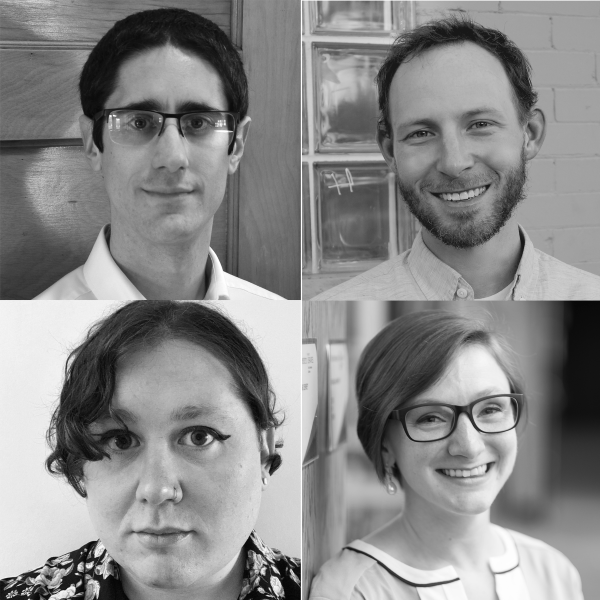In 2017, Keith Pendergrass, Walker Sampson, Tessa Walsh, and Laura Alagna began researching the environmental impacts of digital preservation, building on previous efforts in the field that focused primarily on electricity use. We found that digital preservation’s use of information and communication technology (ICT) results in significant environmental impacts from the ICT component life cycle—raw material extraction, refining, manufacture, shipping, use, and disposal. Although technological advances are improving ICT efficiency, the rapid growth of digital acquisitions and our standard practice of intensive management of digital objects overwhelm these efficiencies and undermine ongoing environmental sustainability. By contributing to the climate and other environmental crises, the cumulative impact of digital preservation efforts everywhere will have a deleterious effect on preserving key resources anywhere, eroding the profession’s ability to acquire, maintain, and provide access to valuable digital materials. Therefore, to ensure the continued success of our profession’s efforts to secure our digital legacy, we sought to significantly reduce the full life-cycle environmental impacts of digital preservation practice.

To create environmentally sustainable digital preservation, we launched an initiative to empower digital preservation practitioners by providing the intellectual tools they need to integrate environmental sustainability into their specific organizational or individual contexts. By developing, and facilitating the implementation of, a universally-applicable framework to embed environmental sustainability principles into digital preservation practices, we are building a global community of practice that explores adjustments to digital preservation work to achieve significant environmental gains in aggregate. Our initiative to date includes our foundational research article “Toward Environmentally Sustainable Digital Preservation” in American Archivist 82.1 (Spring/Summer 2019) (available open access: https://dash.harvard.edu/handle/1/40741399), the workshop protocol “Enacting Environmentally SustainableDigital Preservation” (available open access: https://doi.org/10.21985/n2-hxe1-m195), and in-person and virtual education and outreach efforts. Taken together, they constitute a body of groundbreaking educational materials that enable practitioners to translate the concepts of sustainable digital preservation into action.
We wrote our research article to reach a diverse audience who work with digital objects in any capacity, and sought to establish in the digital preservation literature the full life-cycle environmental impacts of ICT components and to provide an actionable framework for improving the environmental sustainability of digital preservation practice. The digital preservation literature’s previous focus on the electricity use of ICT framed sustainability as a technological problem. However, our research into the environmental impacts of ICT components’ full life cycles makes it clear that simply altering how we use technology is not the solution. Rather, we must critically examine through the lens of sustainability how much we preserve, how we preserve it, and how we make it available to our communities. Drawing on the work of Ehrenfeld, Abrams, and Goldman, we argue for a sustainability-focused paradigm shift in our practice of appraisal, permanence, and availability of digital materials. Instead of providing specific technical or operational guidance, we use Ehrenfeld’s sustainability paradigm shift to give practitioners a framework for thinking through and integrating sustainability principles into digital preservation practices in their specific contexts.
To reach a diverse audience and to emphasize that anyone who works with or makes decisions about digital objects in any capacity can improve digital preservation’s sustainability, we sought publication in a journal with a broad professional audience and a wide distribution. Since publication, our article has become foundational for continued work and learning on this topic in the field as others have integrated it into presentations, workshops, national-level reports, research papers, blog postings and other social media discussions, course syllabi, and peer-reviewed articles.
We developed a workshop that we released as an open-access protocol to enable the translation of our ideas and recommendations from theory to action, building a community of practice around our initiative. Our workshop protocol encourages participants to engage with sustainability principles via the paradigm shift from our article and then work together to develop action plans to implement these principles in their organizational contexts. By making the workshop protocol openly available, we reduce the barriers to implementation of our framework and provide a method for practitioners to improve the sustainability of their digital preservation practice.
We strengthened the growing community of practice by engaging with the profession through in-person and virtual education and outreach: giving lighting talks and presentations at conferences, conducting webinars, and writing blogposts for professional interest groups. We presented initial findings in lightning talks at the BitCurator Users Forum2018 and iPRES 2018. In May 2019, the National Digital Stewardship Alliance’s Infrastructure Interest Group invited us to give more detailed findings as part of a webinar on environmental sustainability. In summer 2019, we gave two full presentations on our final findings and recommendations to the annual meetings of the Rare Books and Manuscripts Section of the ACRL and the Society of American Archivists (SAA). We then ran a workshop at the BitCurator Users Forum 2019, facilitating participants’ exploration of our paradigm shift and translation of those sustainability principles into action plans. The Digital Preservation Coalition invited us to conduct a webinar for its members during which we presented our arguments and led open discussion of sustainable digital preservation in April 2020. Also in April, we wrote an invited blog post for the SAA Issues & Advocacy Section describing our BitCurator Users Forum workshop and releasing our open-access protocol. Finally, in July 2020, Pendergrass wrote an invited blog post for theSAA Electronic Records Section describing initial efforts to integrate environmental sustainability into policies and workflows at his organization.
Over the past three years, our initiative has been a leading voice for creating environmentally sustainable digital preservation, helping the profession shift from nascent discussions at the periphery to robust dialogue at the center. Our efforts have brought increased attention to the issue, strengthened the global community of practice, and accelerated progress from discussion to implementation. We hope that this is only the beginning and that through collective action we can make digital preservation environmentally sustainable, thus being part of the solution that leads society to sustainability in all areas and ensures our continued success in preserving our digital legacy.






























































































































